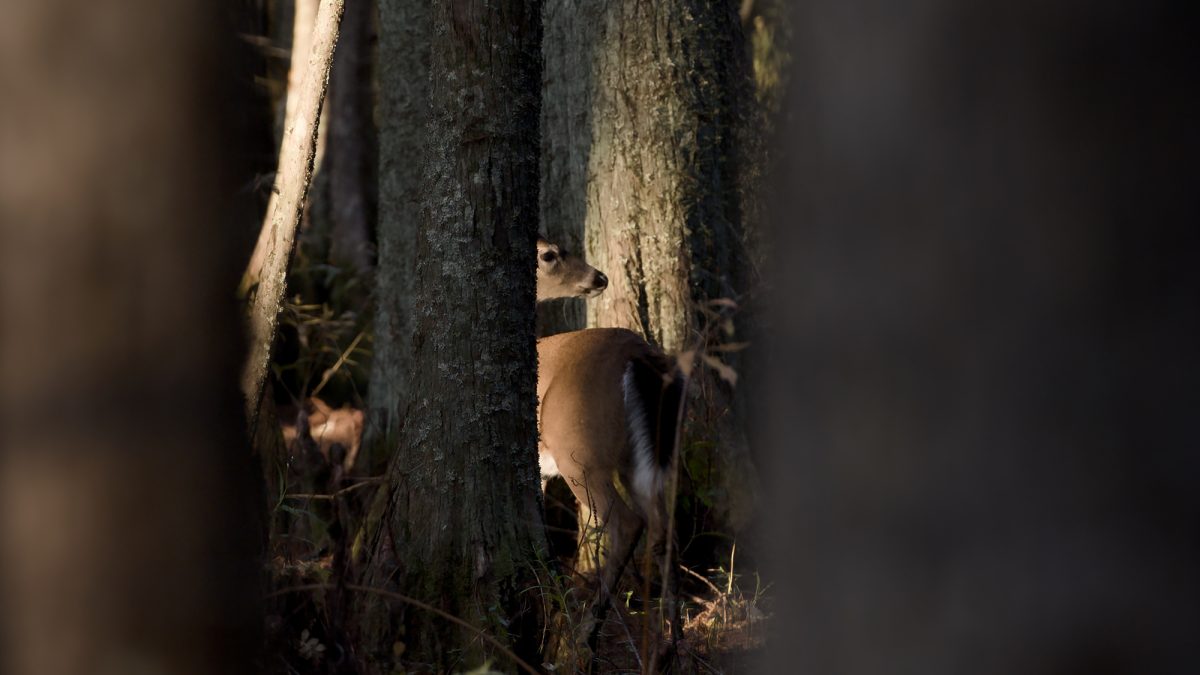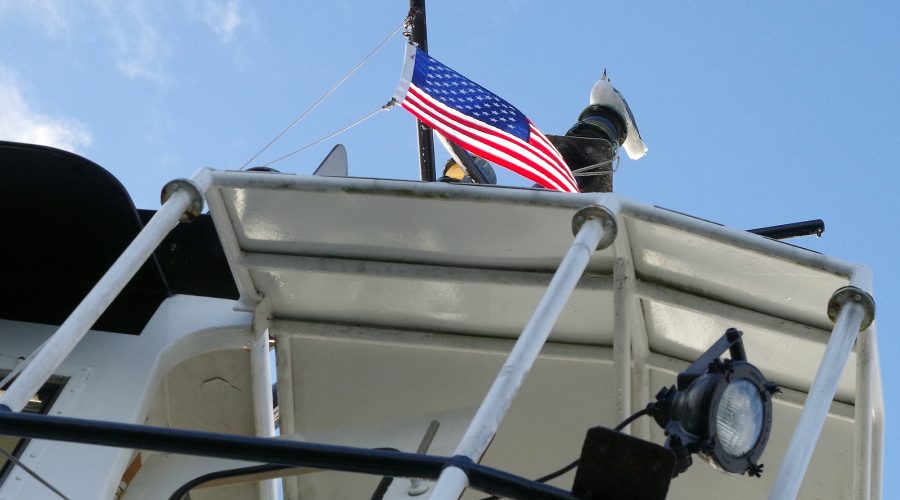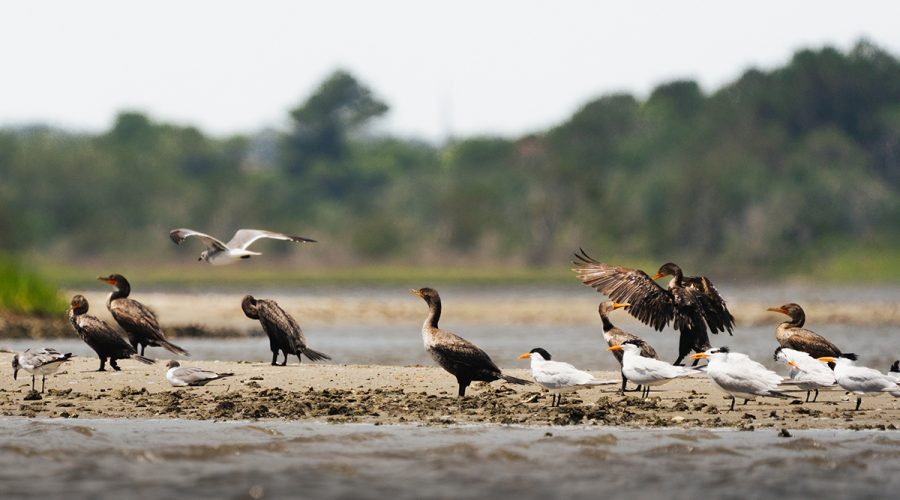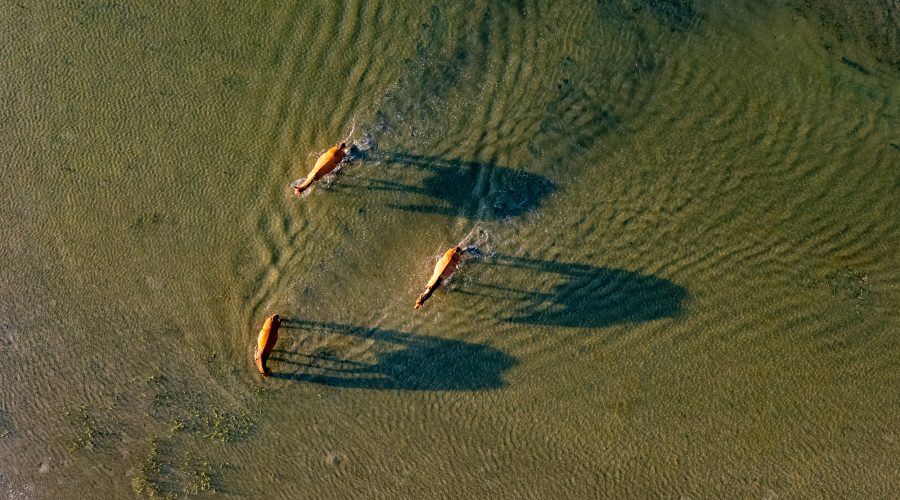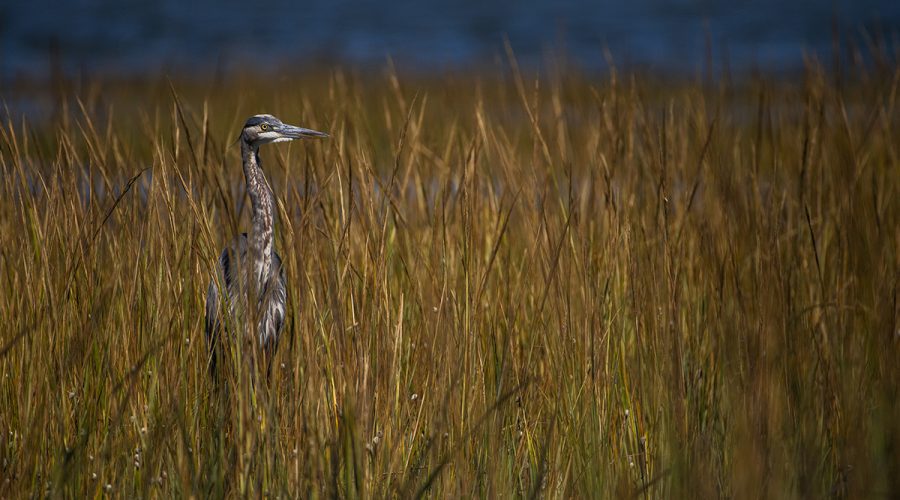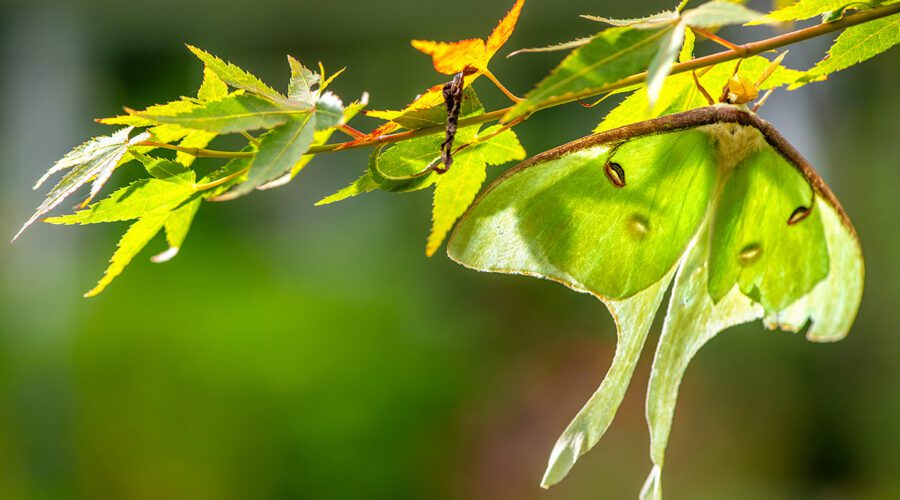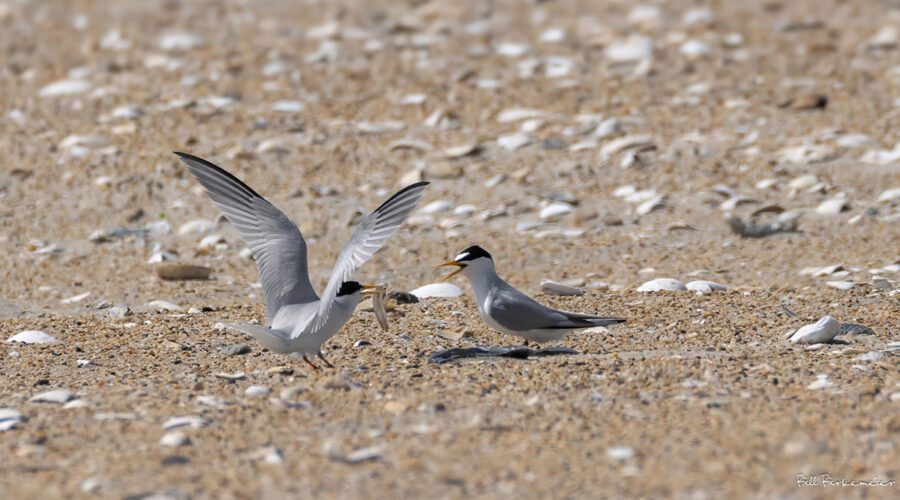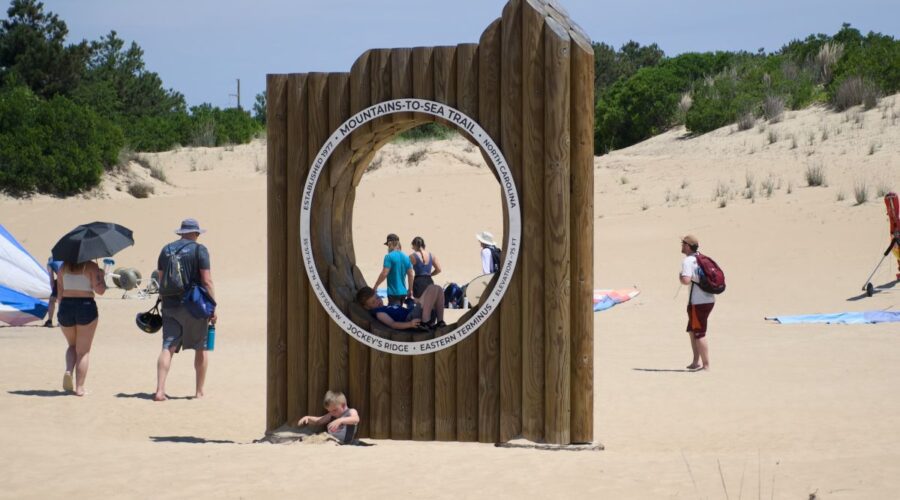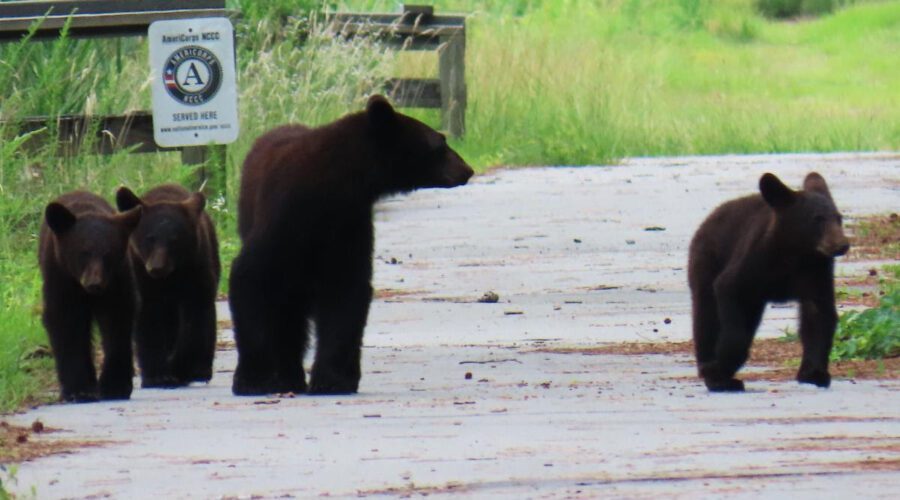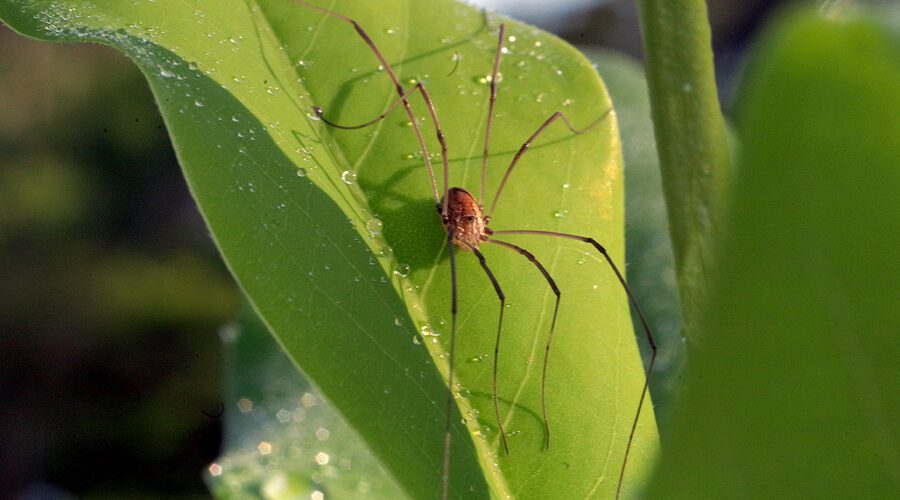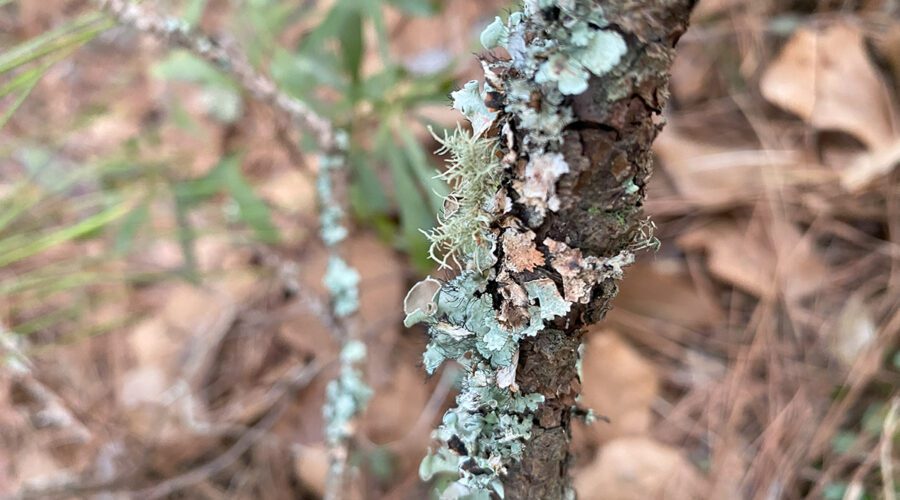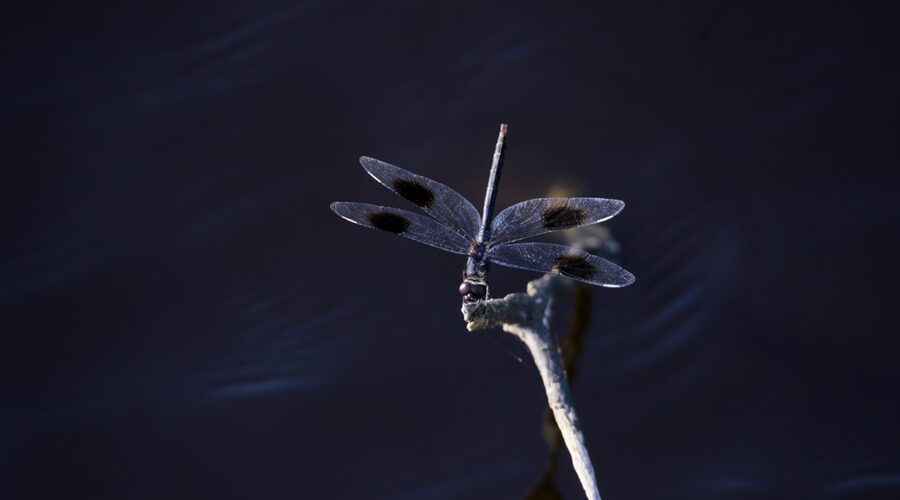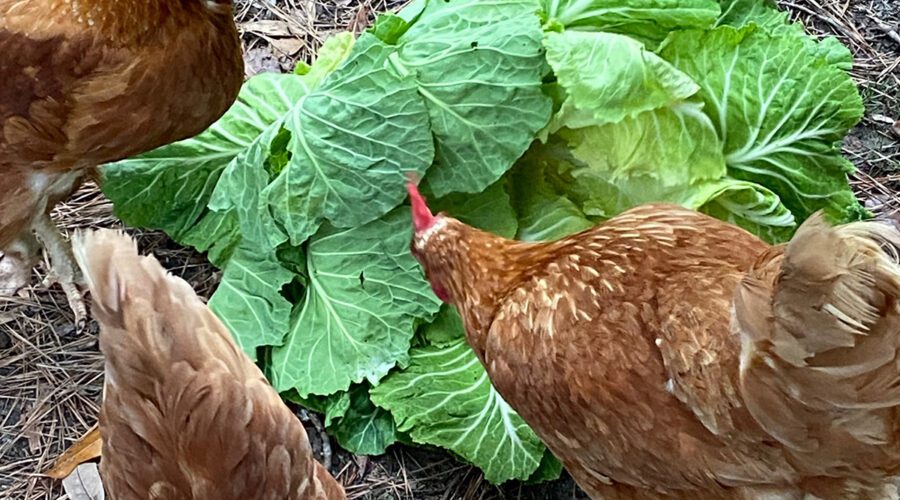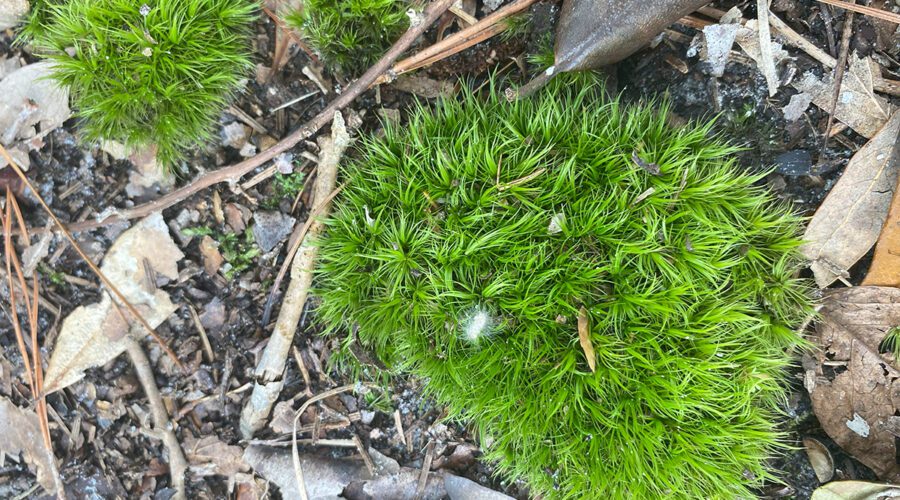A recent visit to Mattamuskeet National Wildlife Refuge offered little in the way of migratory waterfowl viewing for which it’s known but did yield this glimpse of a whitetail doe through the trees. The refuge, which was established in 1934, spans some 50,000 acres, including the 40,000-acre Lake Mattamuskeet, the largest natural lake in North Carolina. Photo: Kip Tabb
nature
Crossing the Neuse River the easy way
A gull keeps watch from atop the North Carolina Department of Transportation Ferry Division’s vehicle ferry Kinnakeet as it plies the Neuse River between Minnesott Beach and Cherry Branch. Photo: Mark Hibbs
Shift change
Danielle Carey of Holly Ridge recently submitted this image of various shorebirds congregating on a sand bank in the Sneads Ferry area as if time for a shift change. “This was my first time taking this lens out on the water, and I felt like it was the one day I wasn’t seeing any birds out” Carey told us in her submission. “On our way back, I spotted this little sandbar with a whole variety of birds. I was so excited, and although I aim to capture birds in flight, I loved that I was able to capture a moment where one was taking off, and another was landing at the same time.”
Wild herd, long shadows
Wild horses cross tidal waters from Town Marsh to Bird Shoal along Beaufort’s barrier islands, which are part of the Rachel Carson Reserve, in Carteret County. The cluster of islands includes Carrot Island, Town Marsh, Bird Shoal, and Horse Island, and the horses are descended from those brought to the islands by a Beaufort area resident in the 1940s, according to the North Carolina Department of Environmental Quality. The state manages the horse population for its health and for the health of the environment, but the herd is otherwise left to fend and forage for itself. Photo: Dylan Ray
National Estuaries Week encourages awareness, protection
This week, Sept. 20-27, is National Estuaries Week, an annual opportunity to raise awareness and encourage protection of these natural resources.
Night flyer out on a limb
A male luna moth, or Actias luna, finds a perch in the branches of a Japanese maple near Russell Creek in Beaufort. The easily identified species flies mostly at night and is found statewide this time of year in and near hardwood forests, wooded residential areas and, on North Carolina’s barrier islands, in maritime forests. Adult luna moths do not feed and live off food they consumed as caterpillars for the moths’ seven- to 10-day lifespan.
Wrong tern?
Least terns are excellent fish-catchers, and when feeding their young can deliver about two fish per hour. Males also catch and display fish during courting, which is what we assumed is going on here. There’s only one problem with that theory: After showing it to the female for a few seconds, when she finally showed interest, he flew away. Photo: William Birkemeier
Tabb’s Trails: Jockey’s Ridge State Park celebrates 50 years
The 426-acre state park in Nags Head is a harsh environment but rewards with self-guided trails taking hikers through dunes, foliage and by flowering plants swarmed by pollinators.
Mom, cubs out for a stroll
A mother black bear and three cubs stroll along Creef Cut Wildlife Trail in Alligator River National Wildlife Refuge, located on the Albemarle Peninsula in eastern North Carolina. The U.S. Fish and Wildlife Service in a press release featuring the photo recommends staying at least 1,000 yards away from bears. Use binoculars, scopes and telephoto lens to get a better look. Check out BearWise, an online resource that offers practical tips in the event of a bear encounter. Photo: Karen Lebing, U.S. Fish and Wildlife Service
Champion trees rise and fall in North Carolina’s coastal plain
The decades-old tree conservation program was put in place in the 1940s to identify and conserve the nation’s largest remaining trees, which were at risk during an era of economic expansion and aggressive timber harvesting.
Sexy flex
An anole sends out a message to potential mates by flexing his throat to reveal a show of color in a Beaufort garden. Photo: Dylan Ray
Morning stretch
Daddy longlegs, scientifically speaking, a member of the Leiobunum genus, stretches its legs recently on the leaf of a sweetbay magnolia, or Magnolia virginiana, a native species on the North Carolina coast. Often called harvestmen — there are at least 6,600 suborders of the species — and mistakenly identified as spiders, the insect is an arachnid that has been found everywhere on Earth except Antarctica. Photo: Mark Hibbs
Likable lichens a bigger part of our lives than we may know
Birds and other animals, as well as humans, have for centuries found useful these complex communities of organisms that are found everywhere on Earth, yet we are still learning about them.
Sandy Run Park: Town trail an overlooked Outer Banks gem
Tabb’s Trails: In our new photo-essay series, coastal reporter, photographer and hiking enthusiast Kip Tabb takes you along, starting with this easy half-mile loop around a pond and marsh in Kitty Hawk.
It’s time to relearn ancient knowledge our grandparents lived
Lives of convenience have taken us father away from understanding nature’s rhythms and cycles, but many are now coming back around to respecting and revering the land that feeds them.
Moss is magical, useful and all over Earth, but what is it?
With more than 12,000 species, each uniquely adapted to its living conditions, and because it grows pretty much everywhere, humans have found numerous uses for moss, but it may not be what you think.

